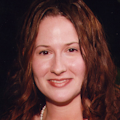As a firefighter in Parker, Colo., Quinn MacLeod always had a particular reaction upon reading a new line of duty death announcement, he said. He noticed that they are usually attributed to just a few different causes, and wondered, “Why do we keep doing this over and over? Why do we keep making the same mistakes?”
As a result, he dove into studying “why we do what we do, and why we make the decisions we make,” and now offers workshops to the fire service based on his research. At the Firehouse World conference in San Diego this week, he presented a talk titled, “What Did You Say? Managing Risk Through Improved Communications.”
As an example, MacLeod asked the class members how they would leave the room in the event of an emergency. Most agreed that they would automatically file out the same door they had entered, at the back of the room “Why is that?” he asked, when there are two other exits at the front of the room, which lead more directly to the outdoors? It’s because people don’t usually think to ask and they stick with what they know. The same phenomenon occurs in venues such as movie theaters, he noted.
“What happens if you don’t communicate well?” he asked. “You make assumptions to fill in the gaps. If it’s a little bit off and we keep going down that road, where are we going to be in 15 minutes? Way off track.”
MacLeod did discuss equipment-related issues, but primarily focused on the human factors in communication. “Technology is getting closer but it’s not going to solve our communication problems,” he said.
He got the conversation going with a funny video of a communications snafu at sea. A ship captain is seen arguing over his radio with someone else about who should adjust their course to avoid collision. Finally, the ship captain learns that he’s actually talking to a lighthouse operator. In this example, MacLeod notes, the captain could have avoided confrontation and potential disaster by simply asking questions and dropping his attitude.
The concerns of radio traffic firstly include the loss of facial cues and body language, he said. Radio requires more explanation and fails to convey things like urgency in tone of voice. MacLeod suggests that sometimes it is worth walking over to communicate with someone in person on a scene.
Another issue is getting people to understand the difference between emergency radio traffic and non-essential traffic, and actually paying attention to when to hold back. “We all live in a micro-world,” MacLeod explained, and it’s natural that we focus on our individual concerns and missions. It takes discipline to focus differently, he said.
MacLeod ran through his “Guidelines of a Good Listener,” and noted that the topic doesn’t just apply to emergency services but to every day life:
- Remove distractions
- Stop talking and focus on the speaker (When you’re both talking, you’re not really hearing much, he says, and you have less “situation awareness” – which actually raises stress levels.)
- Listen, don’t just wait to talk
- Even though you may already have a perception, stay neutral
- Don’t interrupt, and let the speaker finish
- Ask for clarification if unclear
- Help them communicate better
- Don’t walk away until the conversation is finished (MacLeod suggests always asking “Are we done?” or “Any questions?”)
MacLeod further ran through speaking skills and concerns of two-way communication, which included attitude barriers and shifting of blame when a message is misunderstood.
In closing, MacLeod discussed specific advice for tactical briefing, crew briefing and intra-crew briefing. He also had the class act out examples utilizing his steps which include relaying the situation, assignment, how to make it safe and how to support it.
“The number one tool all leaders use to be effective is communication,” MacLeod stressed, and that’s at all levels. If two firefighters take an assignment, he said, usually one will naturally take the leadership role. “A public speaking class should almost be mandatory for firefighters,” he asserts, because all need to be able to communicate and lead with each other and the public.
About the Author

Heather Caspi
Managing Editor, News Team
Heather Caspi is an associate editor at EMSWorld.com and has been with Cygnus Business Media since 2000, serving various roles with all three public safety sites. She graduated from the University of Maryland with degrees in Journalism and English Language and Literature, and earned her EMT-B through Merritt College and the Oakland Fire Department in Oakland, California.